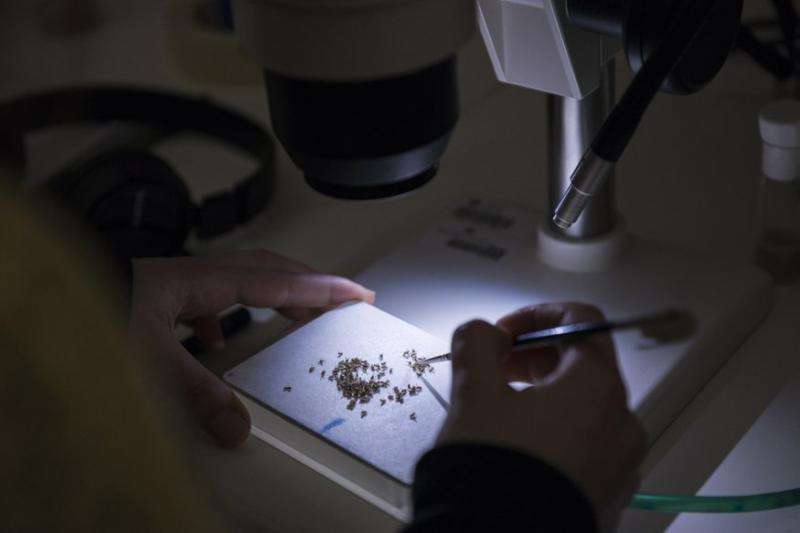Evolution of a species also involves the bacteria it carries

Animals live in close association with microorganisms, carrying beneficial bacteria while coping with pathogenic infections. Now, in a study published this week in PLoS Genetics, researchers from Instituto Gulbenkian de Ciência (IGC, Portugal) discovered that symbiotic bacteria play a direct role in the evolution of their host, shaping the way it adapts to pathogens.
It's clear that bacteria living inside animals play important roles in the host's life. Symbiotic bacteria can influence host development, physiology, behaviour, and can also increase host resistance to pathogens. But how much the evolution of the symbiotic bacteria influence the adaptation of animals to pathogens has not been addressed. Elio Sucena and Luis Teixeira, group leaders at the IGC, combined their expertise to solve this problem.
The experimental setup involved exposing Wolbachia, a symbiotic bacterium of fruit flies (Drosophila melanogaster), to viral infection. "Our previous work had shown that Wolbachia can protect fruit flies against viruses, and that different strains of these bacteria confer different levels of protection. Therefore, by studying flies that carried different strains of Wolbachia, we could investigate how evolution occurred both at the level of the bacteria and of the host," wrote Vitor Faria and Nelson Martins, first co-authors of this work.
By comparing populations of flies that evolved in the presence of the virus with others that evolved in its absence, the researchers observed significant changes in their bacterial composition. Throughout evolution, the Wolbachia strains that provided higher protection to viral infection were selected and remained in the population of flies exposed to virus, whereas the other strains disappeared. These results indicated that selection of Wolbachia strains was associated with the advantage they provided to the host—after infection, flies with these strains were able to survive better and reproduce more than the flies that carried less protective strains.
"Hosts and symbiotic bacteria are acting as an unit in response to pathogen infection, with the evolution of both genomes contributing to host adaptation. We believe similar results will be observed with other bacteria and animals," says Élio Sucena.
"The role played by symbiotic bacteria in host evolution may have to be taken into consideration when addressing different host-pathogens interactions," adds Luis Teixeira.
More information: Vitor G. Faria et al. Drosophila Adaptation to Viral Infection through Defensive Symbiont Evolution, PLOS Genetics (2016).
Journal information: PLoS Genetics
Provided by Instituto Gulbenkian de Ciencia
















